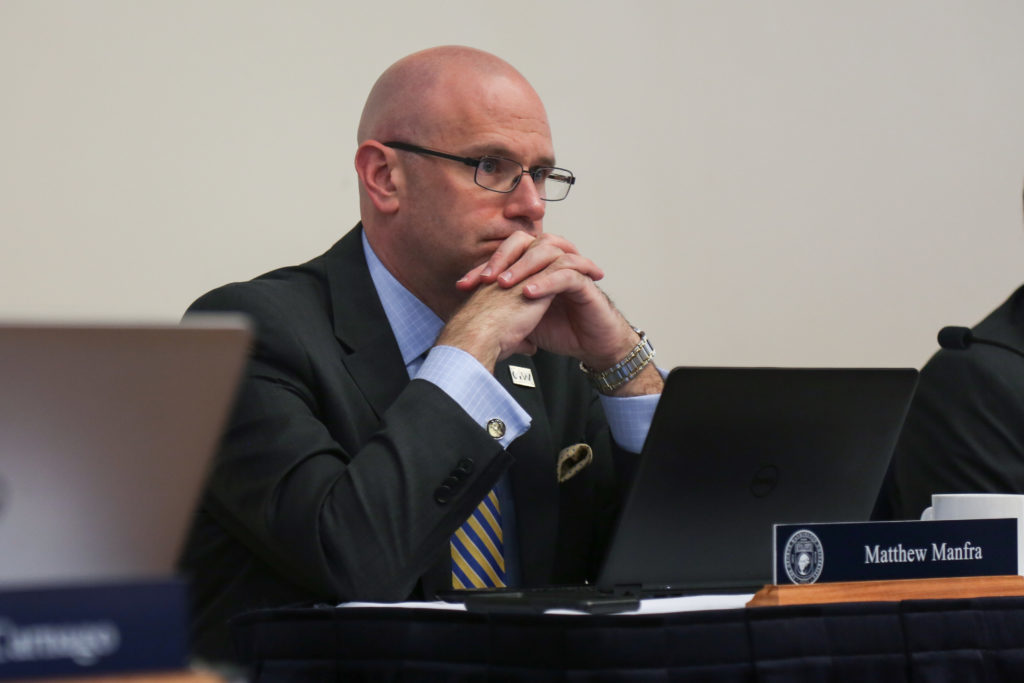The University’s fundraising effort rebounded in the final year of the $1 billion campaign.
GW raised nearly $117 million last fiscal year, rebounding from fiscal year 2016 when fundraising fell to $96.5 million, a University spokeswoman said. Experts said fundraising can vary based on officials’ ability to attract large gifts that often make up much of the money a university is able to raise.
The $1 billion campaign ended last July, raising a total of $1.02 billion over three years and reaching its $1 billion benchmark a year earlier than originally planned. Nearly 67,000 donors made 165,000 individual contributions to the campaign, the largest fundraising effort in the University’s history. The majority of the donors were alumni, giving 63 percent of funds raised during the campaign.
In early 2016, progress toward the $1 billion campaign slowed as officials went from raising an average of $23 million a month to $6.5 million a month, but officials ramped up outreach to donors as the University neared the $1 billion benchmark.
University spokeswoman Maralee Csellar said fundraising performance varies from year to year and “the impact of very large gifts is significant and leads to peak years and valley years.”
“With the close of the campaign and the transition to President LeBlanc, the Division of Development and Alumni Relations has invested time and resources in being more efficient with our donor discovery and pipeline work,” Csellar said.
She declined to say if the decrease in donations in fiscal 2016 was an indication that momentum for the $1 billion campaign had slowed.
The University did not attract a massive donation, like the $80 million gift from billionaire philanthropists Michael Milken and Sumner Redstone to rename the Milken Institute School of Public Health in 2014, in the later part of the campaign. That donation gave a major boost to GW’s overall fundraising effort.
Christine Hoffman, the vice president of Campaigns and Strategic Initiatives at Tulane University, said donors often become less motivated to participate as major campaigns wear on, a phenomena known as donor fatigue.
Donors that are engaged in the fundraising push at the beginning often – but not always – stop donating toward the end of the campaign, Hoffman said. Donors sometimes begin to question why fundraising is still going on, she said.
“It’s like okay, now what are we raising money for? Everything was a priority six months ago and now what’s special?” she said.
GW’s campaign raised $163 million for construction, including projects like the textile museum and the Milken Institute School of Public Health building. The $275 million Science and Engineering Hall attracted 318 donations – the most for a single project.
Hoffman said donors are being more selective in their giving because they want to see their contributions going to a school or program they attended or to which they feel a strong connection.
Robert Shepard, the vice president of the Office of Alumni Affairs and Development at Duke University, said fundraising in a given year is impacted more by large gifts than donor fatigue.
“You’ve probably heard an old fundraising line, 90 percent of the money is generated by 10 percent of the donors,” he said. “So often times decreases in fundraising come about because you have a particularly good year then the large gifts don’t come through in the timing that you want and you experience a slight decrease.”
In the largest gift of fiscal year 2016, the University received $2.18 million from the Avenir Foundation to create an endowment for the GW Textile Museum and $4.8 million for an endowed professor position in the business school.
To mitigate a fundraising downturn, officials can engage alumni more in campus life at a university rather than only seeking donations.
Brigitta Toth, an associate director of planned giving at Washington University in St. Louis, said universities should engage alumni with their interests and build lasting relationship with donors, which can encourage continued giving late in a major fundraising drive.
“Fundraising success for higher education is just knowing your donors and knowing what it is that they’re passionate about and trying to approach them on that basis,” she said.





